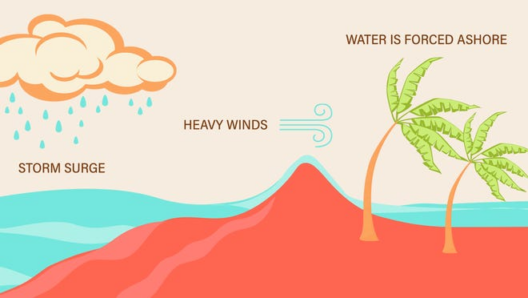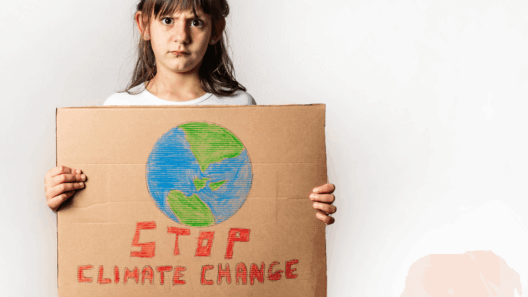Wildfires have become a frequent and devastating occurrence across the globe, primarily attributed to an alarming increase in climate change phenomena. Understanding how climate change exacerbates wildfires is crucial in mitigating their impact and safeguarding our ecosystems.
As global temperatures rise, the conditions that foster wildfires become more prevalent. A combination of prolonged drought, higher temperatures, and increased frequency of extreme weather events contribute to a vicious cycle that enhances the risk of fires. The multifaceted relationship between climate change and wildfires is an intricate puzzle that demands thorough examination.
The role of temperature in wildfire dynamics cannot be understated. Higher average temperatures lead to desiccation of vegetation and soil, creating tinderbox conditions ripe for ignition. When ambient temperatures increase, the moisture content in vegetation diminishes, making it more flammable. Research illustrates that for every degree Celsius increase in temperature, the likelihood of wildfires can increase significantly. This trek down the path of rising temperatures spells disaster for various ecosystems, highlighting the direct correlation between climate change and wildfire occurrence.
A changing climate also brings about alterations in precipitation patterns. In many regions, prolonged dry spells are interspersed with intense rainfall events. This paradox results in a surge of vegetation growth during wet periods, which later dries out and creates a plethora of combustible material. Wildfires thrive on this surplus of dead plant matter, which becomes fuel for flames when conditions turn hot and dry. As climate change continues to reshape weather patterns, the increased availability of such fuel accelerates the frequency of wildfires.
Extreme weather events have become more commonplace in an era of climate change. Hurricanes, heatwaves, and even summer storms have been linked to climate change, creating scenarios where wildfires can ignite and spread rapidly. Winds associated with these weather patterns can exacerbate wildfires, carrying embers to new locations, thereby expanding the fire’s footprint. Such chaotic conditions illustrate the feedback loop wherein climate change fuels wildfire intensity, leading to further climate disruption.
It is also essential to consider the role of human activity in this equation. Urban expansion and the conversion of land for agriculture or development often lead to disturbances in natural ecosystems. These actions, combined with a warming climate, create ideal conditions for wildfires to ignite and flourish. Furthermore, our reliance on fossil fuels contributes significantly to atmospheric greenhouse gas concentrations, which in turn accelerates climate change and increases the ferocity of wildfires.
Mitigating the risks posed by this phenomenon involves a multifaceted approach. Sustainable land management practices play a pivotal role in reducing fire hazards. Techniques such as controlled burns, which mimic natural fire regimes, can help manage the growth of combustible materials and reduce wildfire risks. These practices not only protect property and human life but also preserve ecosystems that are crucial for biodiversity.
The establishment of strategic firebreaks and buffer zones can also mitigate wildfire risks in vulnerable areas. Such preemptive measures are invaluable in managing wildfires’ potential impacts, whether on natural habitats or human settlements. Integrating fire management into broader land-use planning and conservation strategies ensures a holistic approach to mitigating the influence of climate change on wildfire frequency and intensity.
Education and community involvement are key to fostering public awareness surrounding wildfire risks. Engaging local communities in fire preparedness programs can greatly diminish the destructiveness of wildfires. Teaching individuals about the importance of creating defensible space around their properties, and understanding how vegetation management contributes to fire prevention, empowers them to take proactive measures.
The intertwining of climate change and wildfires presents a significant ecological threat. It is crucial to recognize the urgency in addressing this challenge. Collaboration among governments, environmental organizations, and communities is imperative to develop comprehensive policy frameworks aimed at curbing greenhouse gas emissions and adapting to the changes already underway.
As the world wrestles with the implications of climate change, it’s essential to advocate for sustainable practices that can alleviate its impact on wildfires. This includes investing in renewable energy sources, promoting reforestation, and enhancing carbon sequestration strategies. By addressing the root causes of climate change, we can create an environment that is less prone to the devastating effects of wildfires.
Ultimately, the future of our planet hinges on a collective acknowledgment of the detrimental effects of climate change, particularly regarding wildfires. By fostering resilience in both natural ecosystems and human communities, it is possible to navigate the complexities of this relationship more effectively.
In conclusion, wildfires serve as a stark reminder of the perilous consequences of climate change. As temperatures rise and ecosystems falter, understanding the underlying mechanics behind this phenomenon remains more critical than ever. Through a commitment to sustainable practices, education, and strategic management, we can work towards mitigating the impact of climate change on wildfires, fostering a more resilient planet for future generations.





